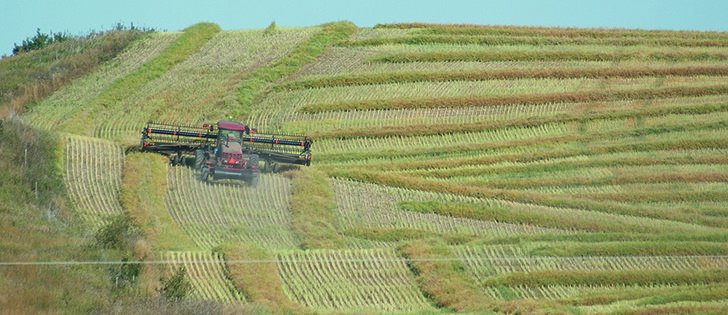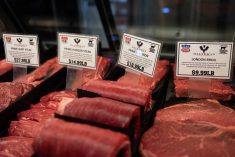Soybean futures up | Crop buyers may favour canola if soybean prices continue to rise
Canola growers haven’t been able to look at futures charts with the same glee as soybean growers, but booming prices for the latter crop still offer them a benefit.
It’s because the higher soybean prices soar above canola, the more attractive canola becomes to vegetable oil crop buyers looking for alternatives, analysts say.
“Canola is cheap now,” said John Duvenaud, publisher of the Wild Oats market newsletter.
“Canola is getting a huge boost from the soybean rally.”
As they combine big crops of canola, farmers have had to endure news of ever-rising soybean prices without a concurrent canola rally.
Read Also

Farm groups ask feds for export sales reporting
The Agricultural Producers Association of Saskatchewan and SaskCrops asks the federal government to create an Export Sales Reporting program.
Soybean futures prices have risen 15 percent since mid-August, while canola climbed only five percent. Canola prices remain below where they were for most of the past year.
Canola prices track soybean prices closely most of the time, but situations like now, when oil-meal values diverge and crop production situations are starkly different, reveal the underlying values within the crops.
The hot, dry weather hitting large areas of the soybean belt is driving the soybean rally.
Soybean crops are in a crucial stage, with plants trying to put all their energy into filling seed pods. Crops need lots of soil moisture to do that well, but many areas are dry.
It is also hot and dry on the Prairies, but that is giving canola an excellent end of season, allowing chlorophyll to be cleared from seeds and allowing plants to die and dry down before the combines hit them.
With crops rapidly maturing, frost fears are receding and many analysts have increased their canola yield expectations in recent weeks while U.S. soybean projections are falling.
It has helped create $11 per bushel canola prices at the same time as $13.50 soybeans, which is a huge spread between the two.
However, canola’s weakness is mostly due to weak vegetable oil prices rather than big Canadian production. Analysts said there is a lot of demand for canola, but it is fundamentally different from that for soybeans because soybeans are mostly valued by their meal content while canola is influenced by its oil.
The same weakness is hitting U.S. sunflower prices, said analyst Mike Krueger of the Money Farm in Fargo, North Dakota.
Canola and sunflowers are usually seen as premium crops compared to soybeans, but the usual relationship is now reversed because protein meal is in short supply in North America.
Canola and sunflowers get most of their value from the world value of vegetable oil, which has been weak recently.
“We still have a glut of vegetable oils on the world market,” said Krueger.
He said the canola-soybean spread could gape wider in coming weeks if soybean yields turn out as low as he expects them to be.
“I think the soybean market still has some upside,” said Krueger.
“Six weeks with no rain … across the entire western corn belt has probably trimmed more yields than some people think.”
Some buyers will be tempted to switch from soybeans to canola if soybean prices stay strong and canola is much weaker, as they are now.
“At some point, because of that big spread, canola will become more attractive,” said Brian Voth, an Agri-Trend Marketing adviser in Ste. Agathe, Man.
He said relatively low prices are needed to use up this year’s big canola crop.
Duvenaud said he expects to see big sales of Canadian canola into offshore markets once the crop starts flooding into the elevator system.
“Canola should be pouring out of Canada after harvest.”
















